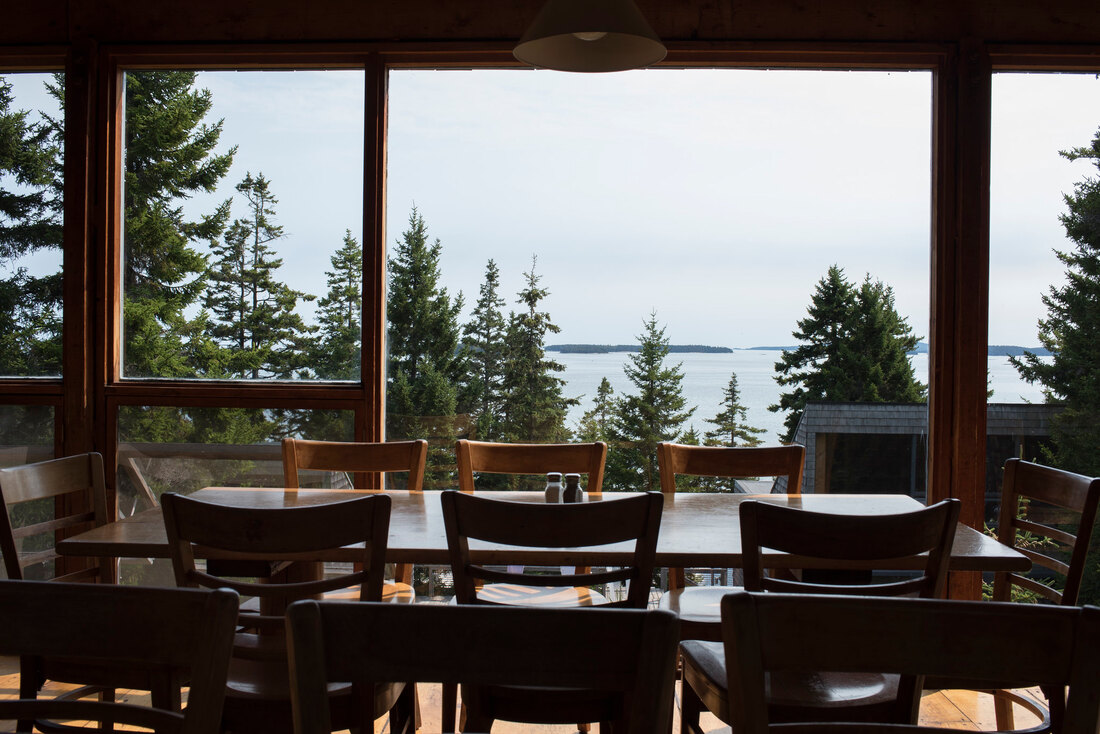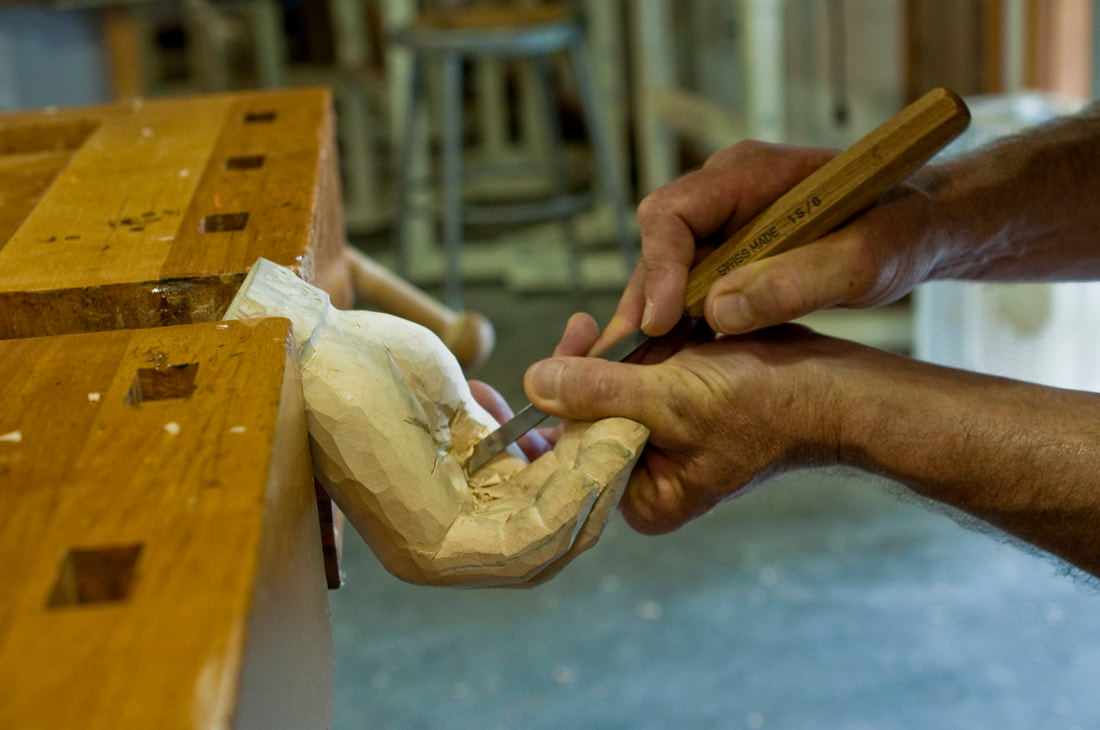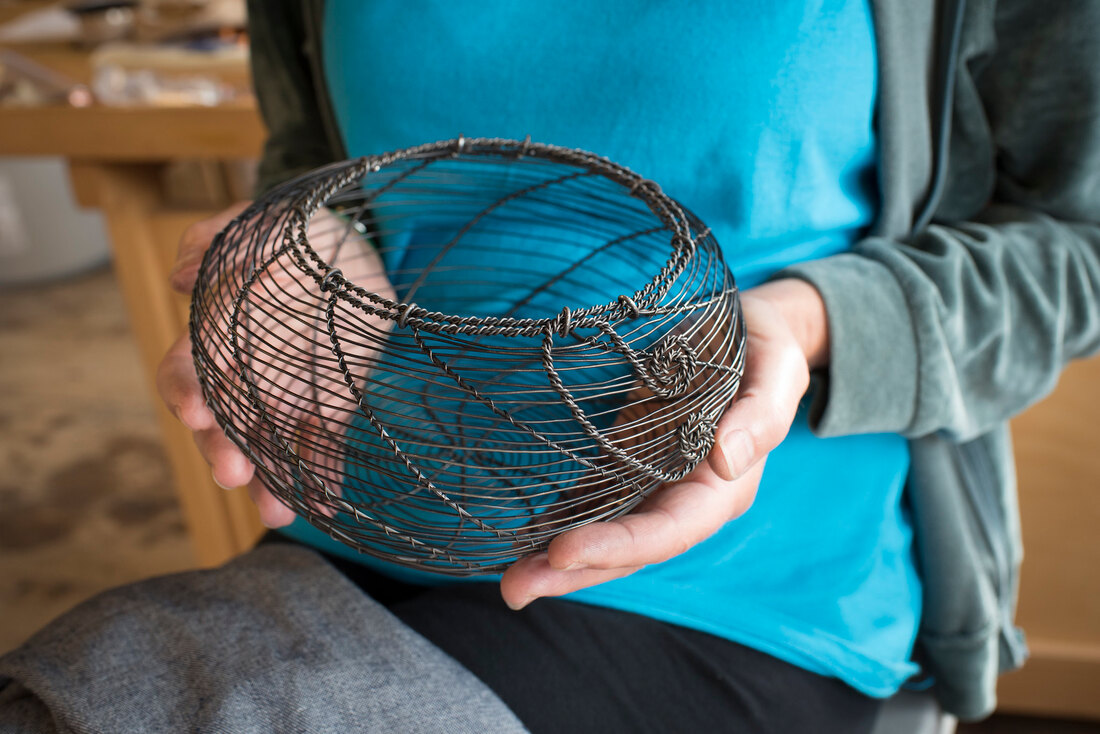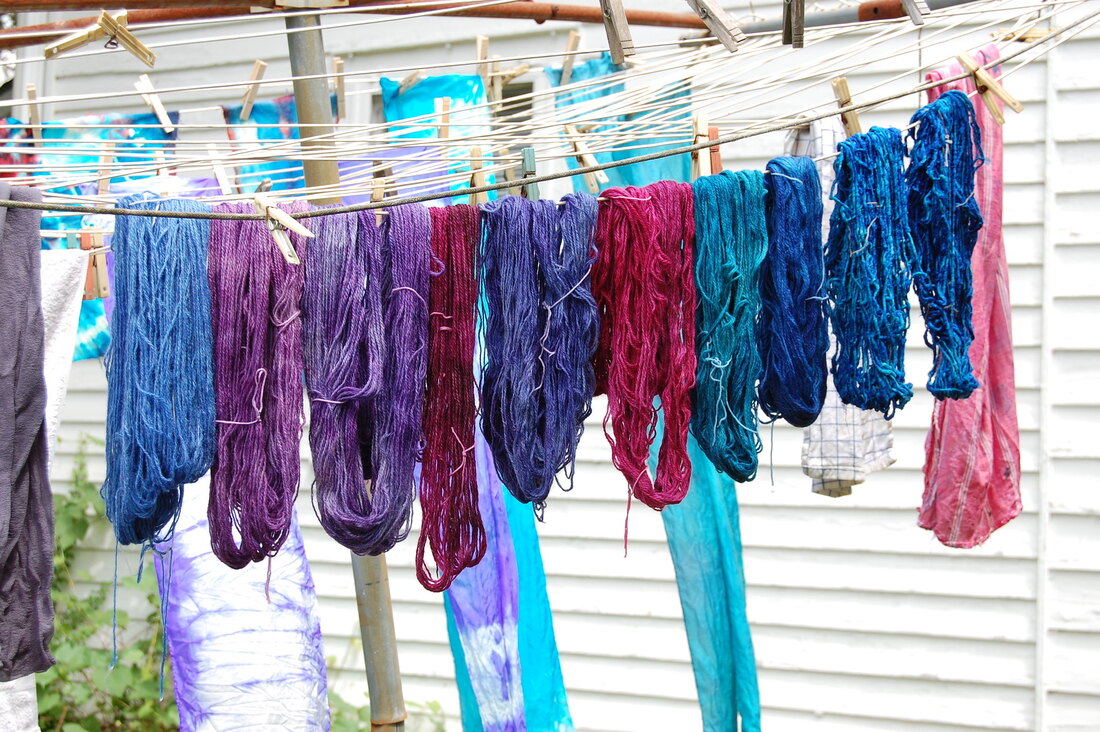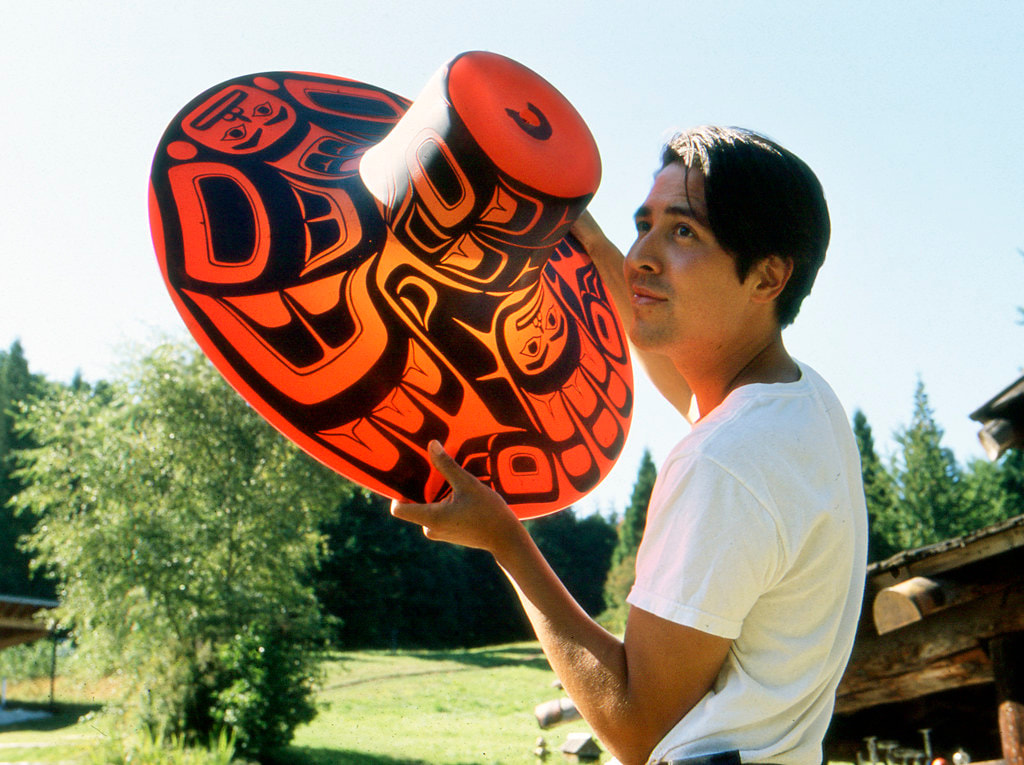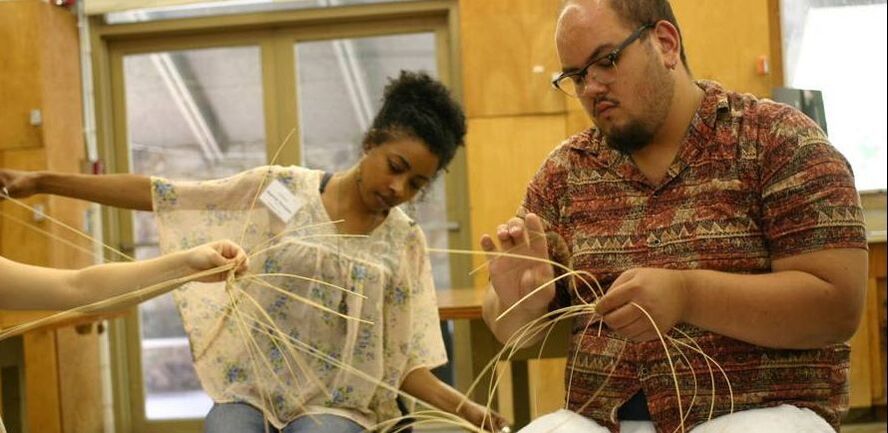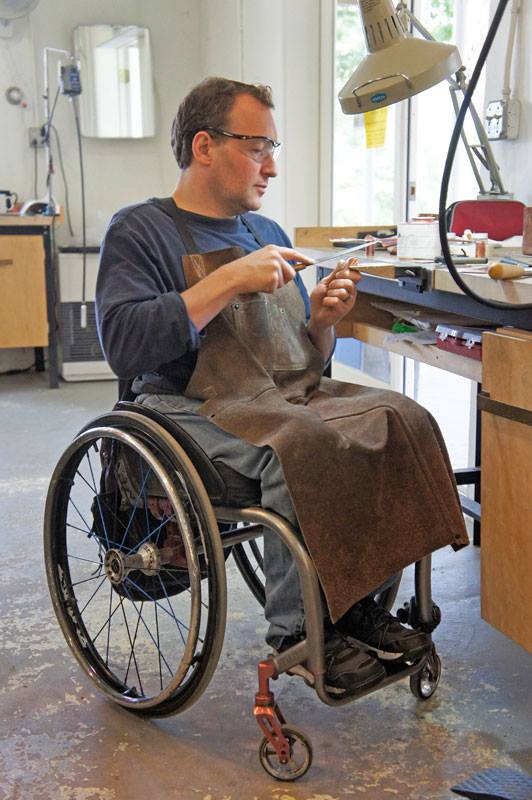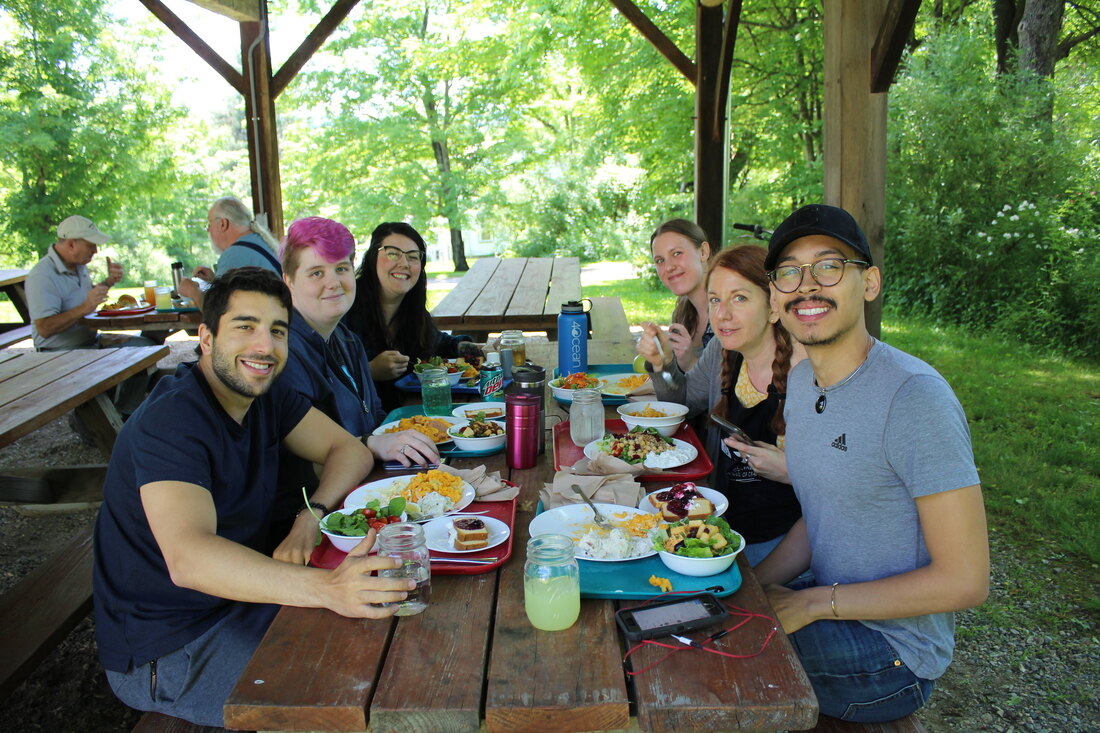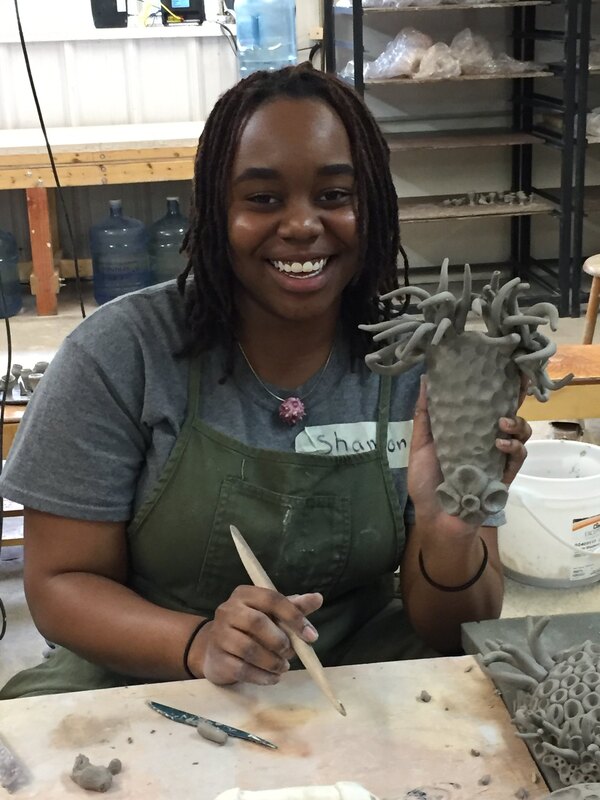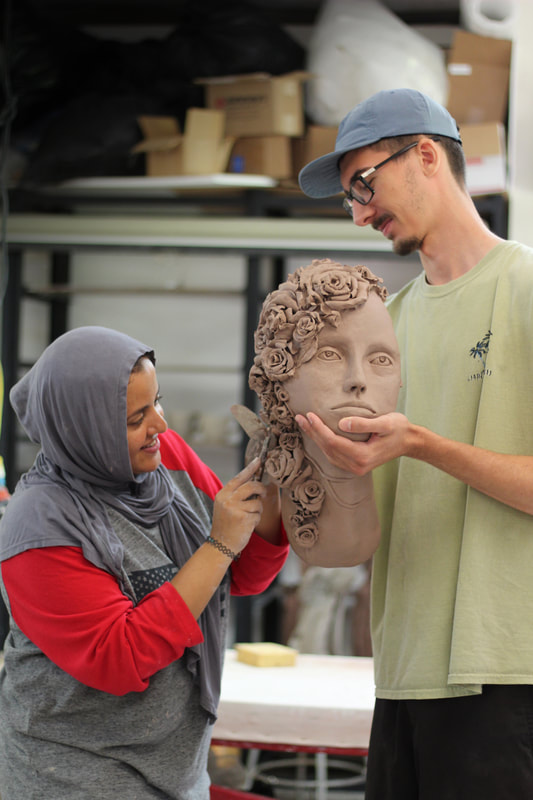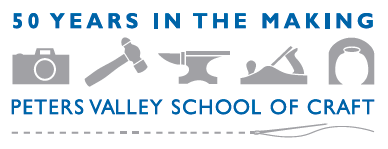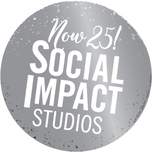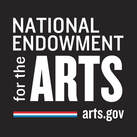Photo: Peters Valley School of Craft
Welcome
Welcome to the “Making Culture IDEA Book: Inclusion, Diversity, Equity, and Anti-Racism (IDEA) for Craft Schools.” This collection of information and ideas is for leaders of the unique and transformative sector of residential craft schools. It is for leaders who are dedicated to making cultural change within their schools that aligns with the opportunities and needs of our time to make a social impact. It is for anyone who wants to take action now toward a more inclusive and equitable world around us.
As craftspeople, we know the power of transforming an idea into reality. As education leaders, we are stewards of learning and change in the world. This combination makes us well-suited to do IDEA work at our schools, but it doesn’t mean that the path will be clear or easy. Our hope is that this “IDEA Book” will give you a reference point to do this work at your school – and to join with others to share challenges, a-ha moments, and good practices. This resource includes questions you can ask yourself and your community, a growing collection of resources, and an online conversation forum.
There is not one way to do this work. This is a process and a journey and you have probably taken a lot of first steps – and missteps – already. Just like any other learning, mistakes are bound to happen. It’s how we learn. The most important act is to commit to being part of a creative solution for your school, and for students, instructors, and staff - present, and future. That can only have a ripple effect for you and and for society too.
We look forward to making culture together!
Kristin Muller, Executive Director, Peters Valley School of Craft
Ennis Carter, Director, Social Impact Studios
As craftspeople, we know the power of transforming an idea into reality. As education leaders, we are stewards of learning and change in the world. This combination makes us well-suited to do IDEA work at our schools, but it doesn’t mean that the path will be clear or easy. Our hope is that this “IDEA Book” will give you a reference point to do this work at your school – and to join with others to share challenges, a-ha moments, and good practices. This resource includes questions you can ask yourself and your community, a growing collection of resources, and an online conversation forum.
There is not one way to do this work. This is a process and a journey and you have probably taken a lot of first steps – and missteps – already. Just like any other learning, mistakes are bound to happen. It’s how we learn. The most important act is to commit to being part of a creative solution for your school, and for students, instructors, and staff - present, and future. That can only have a ripple effect for you and and for society too.
We look forward to making culture together!
Kristin Muller, Executive Director, Peters Valley School of Craft
Ennis Carter, Director, Social Impact Studios
LAY THE GROUNDWORK
Before embarking on IDEA work at your craft school, it is very important to prepare your “workspace” first. Like all good craft practices, you’ll need to evaluate what you have to work with, the conditions you have available, and a plan for what you are setting out to do.
It may be helpful to work with a consultant or facilitator. Having outside assistance can help you focus on being in the work, not having to manage the work.
IMPORTANT NOTE
When we talk about inclusion, diversity, equity, and anti-racism, we are speaking to the need to do this work within our United States culture. Craft schools attract many people from around the world, which is a great way to encourage cross-cultural learning, but this is not the same as making a culture that upholds the IDEA perspective.
If you decide to lead this work from within your organization, here are some questions that can help you get ready for IDEA in your organization - individually, and together as a community.
QUESTIONS
TIPS for starting the conversation with your Board, Staff & Volunteers
Building up courage is the first step toward starting conversations about IDEA work at your craft school. Having courage doesn’t mean that you don’t have fear, it means that you take action despite the fear.
You don’t need all of the answers to start the learning journey in this work. Inviting others and sharing your own commitment can be a great start: “We’ve made a commitment to inclusion, diversity, equity, and anti-racism here. I don’t know that much, but I want us to do this work together.”
It may be helpful to work with a consultant or facilitator. Having outside assistance can help you focus on being in the work, not having to manage the work.
IMPORTANT NOTE
When we talk about inclusion, diversity, equity, and anti-racism, we are speaking to the need to do this work within our United States culture. Craft schools attract many people from around the world, which is a great way to encourage cross-cultural learning, but this is not the same as making a culture that upholds the IDEA perspective.
If you decide to lead this work from within your organization, here are some questions that can help you get ready for IDEA in your organization - individually, and together as a community.
QUESTIONS
- Why are you embarking on this work?
- Why is this important to your mission?
- As an organization, do you have a clear understanding and explicit language for the
IDEA elements (Inclusion, Diversity, Equity, Anti-Racism)? Where are the gaps? - As individuals, do members of your Board, staff, and volunteers demonstrate a clear understanding of those elements?
Where are the gaps? - What creative ideas do you have to close gaps and overcome barriers? What will help at the individual level and the organizational level?
TIPS for starting the conversation with your Board, Staff & Volunteers
Building up courage is the first step toward starting conversations about IDEA work at your craft school. Having courage doesn’t mean that you don’t have fear, it means that you take action despite the fear.
You don’t need all of the answers to start the learning journey in this work. Inviting others and sharing your own commitment can be a great start: “We’ve made a commitment to inclusion, diversity, equity, and anti-racism here. I don’t know that much, but I want us to do this work together.”
Mindset Tips
Part of the leadership of IDEA work is understanding the challenging and vulnerable nature of it along the way. Like craft, IDEA work is iterative. It includes heightened awareness, practice, and dynamic change. You won’t get it right all of the time and that’s OK. Making a commitment to learning in community and as an individual is a key to moving this work forward. Here are tips that can help:
AWARENESS: Take the Implicit Bias Test
- People who haven’t done this work before, can be oblivious to the systemic oppression and their connections to it. Help them learn while being sensitive to their vulnerability and challenges.
Try to drop the defenses. A lot is going to come up. If you can look at it objectively and not take things personally, you will have a lot more success and feel better in the process. - Identifying a problem is not the same as blame. Focus on identifying the issues first. What needs attention most? What is really happening?
- Reconciliation, healing, and reparations are all part of this work, but you can’t get to them until you open up your mind and heart to the experience first. Having empathy for others - and yourself - is a critical part of this work that can not be skipped.
AWARENESS: Take the Implicit Bias Test
"Impulsive solutions are often ineffective because they are not grounded deeply in courageous acknowledgement of the root causes of problems."
- Vu Lee, "Solutions Privilege," NonprofitAF
"Impulsive solutions are often ineffective because they are not grounded deeply in courageous acknowledgement of the root causes of problems."
- Vu Lee, "Solutions Privilege," NonprofitAF
Making an Action Plan for making culture
All craftspeople know that process is the key to the work. Doing IDEA work is no different. To be able to progress through making a culture of inclusion, equity, diversity, and anti-racism at your school, you need a starting point for your process. Here are core questions that can help you make an Action Plan for your IDEA work:
QUESTIONS
QUESTIONS
- What are your top 3 - 5 priorities for this work right now?
- What is your biggest long-term goal for this work?
- What is your most urgent immediate need related to this work?
- What is your framework for this work?
- Who will lead and steward this work?
- What ideas do you have for carrying out culture shifts? (Workshops? Committees?
Reading/Discussion Groups? Facilitated Community Conversations, Policies, etc.?) - How will you assess progress?
IDEA at Craft Schools
The following is a collection of the most common areas that provide opportunity for you to develop inclusion, diversity, equity, and anti-racism at your school. This section is by no means a complete list of the ways that barriers to IDEA show up in our daily lives. The intention of this section is to provide questions that will spark your own ideas for making culture at your own school.
Each topic follows the shared structure below that may help you navigate them. We have added some blank areas for you to add to this list in your own work, too.
TOPIC
What is it?
Most of the definitions provided here are from Yancey Consulting (see page 21 or online). Other definitions are our own as indicated with an *
How can it show up in craft schools?
These are sample questions you can ask yourself to assess a starting point. You may have others, too.
IDEAS for addressing the topic at your craft school
This is a starter list of things you can do. Other actions will surface as you do this work.
Additional resource links specific to the topic
Each topic follows the shared structure below that may help you navigate them. We have added some blank areas for you to add to this list in your own work, too.
TOPIC
What is it?
Most of the definitions provided here are from Yancey Consulting (see page 21 or online). Other definitions are our own as indicated with an *
How can it show up in craft schools?
These are sample questions you can ask yourself to assess a starting point. You may have others, too.
IDEAS for addressing the topic at your craft school
This is a starter list of things you can do. Other actions will surface as you do this work.
Additional resource links specific to the topic
Racism
What is it?
Racism is any prejudice against someone because of their race when systems of power reinforce those views. Racism is historically rooted in all-encompassing economic, political, social, and cultural structures, actions, and beliefs that systematize and perpetuate an unequal distribution of privileges, resources, and power between white people and Black, Indigenous, and People of Color (BIPOC).
How can it show up at a Craft School? Questions to ask yourself:
IDEAS
RESOURCES
Anti-Racism & Anti-Oppression Resources
Racism is any prejudice against someone because of their race when systems of power reinforce those views. Racism is historically rooted in all-encompassing economic, political, social, and cultural structures, actions, and beliefs that systematize and perpetuate an unequal distribution of privileges, resources, and power between white people and Black, Indigenous, and People of Color (BIPOC).
How can it show up at a Craft School? Questions to ask yourself:
- People arriving at your school may be carrying personal trauma related to all IDEA topics, and especially racism. Are you ready to support them?
- Do you presume that BIPOC don’t have a certain level of experience, education, or wealth?
- Do you presume that an individual’s aesthetic is connected to the color of their skin or cultural background?
- Do you focus your diversity and equity messaging mostly on providing scholarships or free classes? In your messaging, do you show BIPOC at all levels of experience and expertise?
IDEAS
- Nobody coming to a craft school for the first time knows what to expect. Remember that excitement and apprehension will be present. Observe it and be extremely vigilant.
- Being welcoming and meet people where they are. Tap into empathy and humanity.
- Muster up courage and leadership. There is a difference between leadership and authority that can help you set the tone and model behavior.
RESOURCES
Anti-Racism & Anti-Oppression Resources
Oppression
What is it?
Oppression is the use of power to disempower, marginalize, silence, or otherwise subordinate one social group or category, often to empower further and/or privilege the oppressor. Social oppression may not require formally established organizational support to achieve its desired effect; it may be applied on a more informal, yet more focused, individual basis. Anti-oppression practices seek to mitigate its effects and eventually equalize the power imbalance in our communities.
How can it show up at a Craft School? Questions to ask yourself:
IDEAS
RESOURCES
A Cultural Strategy Toolkit
Oppression is the use of power to disempower, marginalize, silence, or otherwise subordinate one social group or category, often to empower further and/or privilege the oppressor. Social oppression may not require formally established organizational support to achieve its desired effect; it may be applied on a more informal, yet more focused, individual basis. Anti-oppression practices seek to mitigate its effects and eventually equalize the power imbalance in our communities.
How can it show up at a Craft School? Questions to ask yourself:
- Do you have an understanding of the pipeline that brought people to your school?
- What systemic barriers prevent people from finding and visiting or attending your school?
- What cultural barrier-creating norms are present at your school?
IDEAS
- Do not make assumptions.
- Recognize the barriers.
- Instead of “They don’t want to come,” consider that their school system may not have had an art program and other factors that may have limited access to art.
- Learn more and ask questions about how people find their way to your craft school. Experiment with new routes.
RESOURCES
A Cultural Strategy Toolkit
Accessibility
What is it?
In the context of diversity, equity, inclusion, and access, accessibility means that something is designed for use by the most significant number of people, including people with disabilities, and doesn’t require adaptation or modification to remove barriers to access or operation. Ultimately, it refers to all being able to experience something independently without exemption despite differences. Accessibility is not accommodations. Accommodations are patches or fixes, applied retroactively to overcome barriers in the environment or system.
How can it show up at a Craft School? Questions to ask yourself:
IDEAS
RESOURCES
Self-Examination: How Inclusive Is Your Campus?
Accessible Language: A Guide for Disability Etiquette
Accessible Resources
Cultural Access Network
In the context of diversity, equity, inclusion, and access, accessibility means that something is designed for use by the most significant number of people, including people with disabilities, and doesn’t require adaptation or modification to remove barriers to access or operation. Ultimately, it refers to all being able to experience something independently without exemption despite differences. Accessibility is not accommodations. Accommodations are patches or fixes, applied retroactively to overcome barriers in the environment or system.
How can it show up at a Craft School? Questions to ask yourself:
- How easy is it to get into the studios?
- How universal are the tools?
- How easy is it for people to get into/access communal space(s)?
IDEAS
- Many craft schools will need to start with Accommodations due to the physical structures that are in place already. If your school is in the woods and/or with older buildings, you may need to provide accommodation while you are overhauling to support accessibility.
- Create policy for a pathway for people to request accommodation that is extremely inclusive and not oppressive. Make it easy for people to receive accommodation. Offer it pro-actively where you know there are or may be barriers.
- Provide different delivery methods of instruction such as, virtual learning, audio/visual content that is accessible outside of your campus.
RESOURCES
Self-Examination: How Inclusive Is Your Campus?
Accessible Language: A Guide for Disability Etiquette
Accessible Resources
Cultural Access Network
Gender Identification
What is it?
One’s innermost concept of self as male, female, a blend of both or neither – how individuals perceive themselves and what they call themselves. One’s gender identity can be the same or different from their sex assigned at birth.
How can it show up at a Craft School? Questions to ask yourself:
RESOURCES
Sexual Orientation and Gender Identity Definitions
Understanding Gender
One’s innermost concept of self as male, female, a blend of both or neither – how individuals perceive themselves and what they call themselves. One’s gender identity can be the same or different from their sex assigned at birth.
How can it show up at a Craft School? Questions to ask yourself:
- Do students identify their gender pronouns?
- Do you have gender-only bathrooms?
- How do you decide who rooms together?
- Introducing yourselves with gender pronouns in all formal moments of introduction.
- Including gender pronoun space on nametags which makes it a norm.
- In some contexts, when a pronoun is required, it may be useful to use ‘they/their’ when you are unsure or don’t know.
- Dropping assumptions about gender and identity. Tapping into sensitivity and respect that supports people being able to represent themselves how they choose.
RESOURCES
Sexual Orientation and Gender Identity Definitions
Understanding Gender
Micro-Aggressions
What is it?
Small acts consciously or unconsciously perpetuated, welling up from the assumptions about IDEA matters most of us absorb from the cultural heritage in which we come of age in the United States. Those many, sudden, stunning, or dispiriting transactions that mar the days of marginalized folks. Micro-aggressions are most often associated with racism, but can occur in other “isms” too.
How can it show up at a Craft School? Questions to ask yourself:
IDEAS
RESOURCES
Examples of Racial Micro-Aggressions
What’s Wrong with Asking “Where Are You From?”
Making the Invisible Visible: Gender Microaggressions
Small acts consciously or unconsciously perpetuated, welling up from the assumptions about IDEA matters most of us absorb from the cultural heritage in which we come of age in the United States. Those many, sudden, stunning, or dispiriting transactions that mar the days of marginalized folks. Micro-aggressions are most often associated with racism, but can occur in other “isms” too.
How can it show up at a Craft School? Questions to ask yourself:
- Have you seen people commenting on or touching hair/body parts of others?
- Have you heard compliments about someone being good at something expressed in surprised ways?
- Have you heard someone speak in a manner that mimics another’s speech pattern or dialect?
IDEAS
- Become more aware of common “whitewashing” language
- Modeling. Course correcting. Acknowledging when it happens.
- Collaborating vs. mandating conformity.
- Rely on your Core Values
RESOURCES
Examples of Racial Micro-Aggressions
What’s Wrong with Asking “Where Are You From?”
Making the Invisible Visible: Gender Microaggressions
Safety
What is it?
The condition of being protected from or unlikely to cause danger, risk, or injury. It can be in the form of physical, emotional, psychological, and social.*
How can it show up at a Craft School? Questions to ask yourself:
IDEAS
RESOURCES
Mind the Empathy Gap
The condition of being protected from or unlikely to cause danger, risk, or injury. It can be in the form of physical, emotional, psychological, and social.*
How can it show up at a Craft School? Questions to ask yourself:
- Do people feel physically safe in the studios, residences, and on campus in general?
- Are you aware of the different perceptions of safety that people can have about being in the woods, in a city, or other specific characteristics of your school’s location?
- Do people feel emotionally, psychologically, and socially safe while at the school or interacting with the school? Do you demonstrate respect for their autonomy and agency? Are the learning experiences supportive and safe? Are there social stratas? Are different educational backgrounds supported?
IDEAS
- For some people who have dealt with trauma, there may be subtle triggers that we are not aware of because we have not experienced them.
- Listen and believe people if they say they don’t feel safe
- “Walking people home” and buddy systems
- Safety lecture during orientation
- Clear instructions on accessing emergency services
RESOURCES
Mind the Empathy Gap
Supremacy
What is it?
Centrality and assumed superiority of a culture, experience, or physicality. White supremacy is the all-encompassing centrality and assumed superiority of people defined and perceived as white and the practices based on this assumption. This overarching political, economic, and social system of domination benefits those defined and perceived as white. At the general level, the racial frame views whites as superior in culture and achievement and views Black, Indigenous, and People of Color as generally of less social, economic, and political consequence; Black, Indigenous, and People of Color are seen as inferior to whites in the making and keeping of the nation.
How can it show up at a Craft School? Questions to ask yourself:
IDEAS
RESOURCES
System of White Supremacy and White Privilege
Centrality and assumed superiority of a culture, experience, or physicality. White supremacy is the all-encompassing centrality and assumed superiority of people defined and perceived as white and the practices based on this assumption. This overarching political, economic, and social system of domination benefits those defined and perceived as white. At the general level, the racial frame views whites as superior in culture and achievement and views Black, Indigenous, and People of Color as generally of less social, economic, and political consequence; Black, Indigenous, and People of Color are seen as inferior to whites in the making and keeping of the nation.
How can it show up at a Craft School? Questions to ask yourself:
- Are you using exclusive language that signifies power of knowledge?
- Do you see examples of applying a power of aesthetics or definitions of “quality” to marginalize or disempower others?
- Have we overlooked some areas of inequity?
IDEAS
- Don’t cut out of or omit people from conversations.
- Reach out to actively include people in conversations.
- Provide language translation. Include alternative language option on your website.
RESOURCES
System of White Supremacy and White Privilege
Communal/Personal Space
What is it?
Personal space is the physical space immediately surrounding someone, into which any encroachment feels threatening to or uncomfortable for them.*
How can it show up at a Craft School? Questions to ask yourself:
IDEAS
RESOURCES
Equity and Public Space
Equitable Placemaking
How to Make Good Community Rules: Eight Simple Rules
Personal space is the physical space immediately surrounding someone, into which any encroachment feels threatening to or uncomfortable for them.*
How can it show up at a Craft School? Questions to ask yourself:
- Do people touch others, such as hugging, without permission an consent?
- Are the communal spaces comfortable for all?
- How sensitive are people to smells (lotions, sprays, food) in a residential spaces?
- Do we have silent hours or spaces designated for silence?
IDEAS
- Clear policies about harassment.
- Clear policies about what is and is not allowed in the residences and in communal spaces.
- Clear health related policies. e.g. what happens if someone is ill in a space?
RESOURCES
Equity and Public Space
Equitable Placemaking
How to Make Good Community Rules: Eight Simple Rules
Aesthetics
What is it?
A set of principles concerned with the nature and appreciation of beauty, especially in art.*
How can it show up at a Craft School? Questions to ask yourself:
IDEAS
RESOURCES
How and Why to Teach Inclusivity in Aesthetics
A set of principles concerned with the nature and appreciation of beauty, especially in art.*
How can it show up at a Craft School? Questions to ask yourself:
- Do you presume a hierarchy among different aesthetics – that one is “better” or of “higher quality” than another?
- Do you elevate personal aesthetics above IDEA-centered communal openness to all aesthetics?
IDEAS
- Evaluate how educational programming reflects different aesthetics
- Discussion circles about personal aesthetics
RESOURCES
How and Why to Teach Inclusivity in Aesthetics
Appropriation
What is it?
The action of taking something for one’s use, typically without the owner’s permission.
How can it show up at a Craft School? Questions to ask yourself:
IDEAS
RESOURCES
Critical Craft Forum
The action of taking something for one’s use, typically without the owner’s permission.
How can it show up at a Craft School? Questions to ask yourself:
- Are you teaching anything that could be considered a traditional craft and/or practice?
- Have you developed programming in collaboration with practitioners of traditional craft? Are they compensated for their time and expertise?
- Do you understand the history and original intent of the traditional craft that you are teaching? Are there sacred considerations for the practice you are teaching that should be respected?
IDEAS
- Collaborate with artists and instructors of the cultural background of the craft being taught.
- Reach out to and collaborate with local indigenous tribes in your area.
- Compensate people for their time and expertise.
RESOURCES
Critical Craft Forum
Native land Acknowledgement
What is it?
A land acknowledgement or territorial acknowledgement is a formal statement, often spoken at the beginning of a public event, that it is taking place on land originally inhabited by or belonging to indigenous people.
How to start the process:
Honoring Native Land w/Acknowledgement
Advice on what not to do. Common pitfalls:
RESOURCES
Honor Native Land: A Guide and Call to Acknowledgment
A land acknowledgement or territorial acknowledgement is a formal statement, often spoken at the beginning of a public event, that it is taking place on land originally inhabited by or belonging to indigenous people.
How to start the process:
Honoring Native Land w/Acknowledgement
Advice on what not to do. Common pitfalls:
- This is not only about the past. There are still indigenous people and tribes on the land, in the area, or displaced somewhere else.
- Center others, not yourself in the acknowledgement. This isn’t about you.
- Avoid mentioning/crediting people who are now the managers of the colonized land even if they are trying to be good stewards. Save that for a different acknowledgement.
- Don’t try to “make up for things” in the act of acknowledging. Focus on honoring and acknowledging.
RESOURCES
Honor Native Land: A Guide and Call to Acknowledgment
ACKNOWLEDGEMENTS
This project was made possible by the National Endowment for the Arts in support of CraftSchools.us, a consortium of residential craft schools in the U.S. dedicated to promoting the craft school experience.
We’d Like to Thank:
Co-Contributors and Review Team:
Lynda Grace Black
Monna Morton
Yancey Consulting (YC) for resource material vital to this work. Before you start - and for reference throughout - see the glossary of terms provided by YC, an organizational and leadership development consulting firm whose mission is to effect transformations for more just, equitable, and thriving societies.
Native Land Acknowledgement
We honor the Indigenous lands of the colonized United State of America. We recognize that this land that extends to the Pacific Island in Hawai’i, the native lands of Alaska, and Central North America, are and have been stewarded, not by the European relatives that forced their colonial power, but by the multi-national Indigenous relatives who have ancient lineages that were and are still tied to these sacred lands. We acknowledge this history and honor these ancient lineages as well as those who were stolen or made to flee from their land due to colonization, genocide, and war.
We’d Like to Thank:
Co-Contributors and Review Team:
Lynda Grace Black
Monna Morton
Yancey Consulting (YC) for resource material vital to this work. Before you start - and for reference throughout - see the glossary of terms provided by YC, an organizational and leadership development consulting firm whose mission is to effect transformations for more just, equitable, and thriving societies.
Native Land Acknowledgement
We honor the Indigenous lands of the colonized United State of America. We recognize that this land that extends to the Pacific Island in Hawai’i, the native lands of Alaska, and Central North America, are and have been stewarded, not by the European relatives that forced their colonial power, but by the multi-national Indigenous relatives who have ancient lineages that were and are still tied to these sacred lands. We acknowledge this history and honor these ancient lineages as well as those who were stolen or made to flee from their land due to colonization, genocide, and war.
Making Culture: Inclusion, Diversity, Equity and Anti-Racism at Craft Schools was developed in Peters Valley School of Craft and Social Impact Studios for CraftSchools.us, supported by the National Endowment for the Arts
